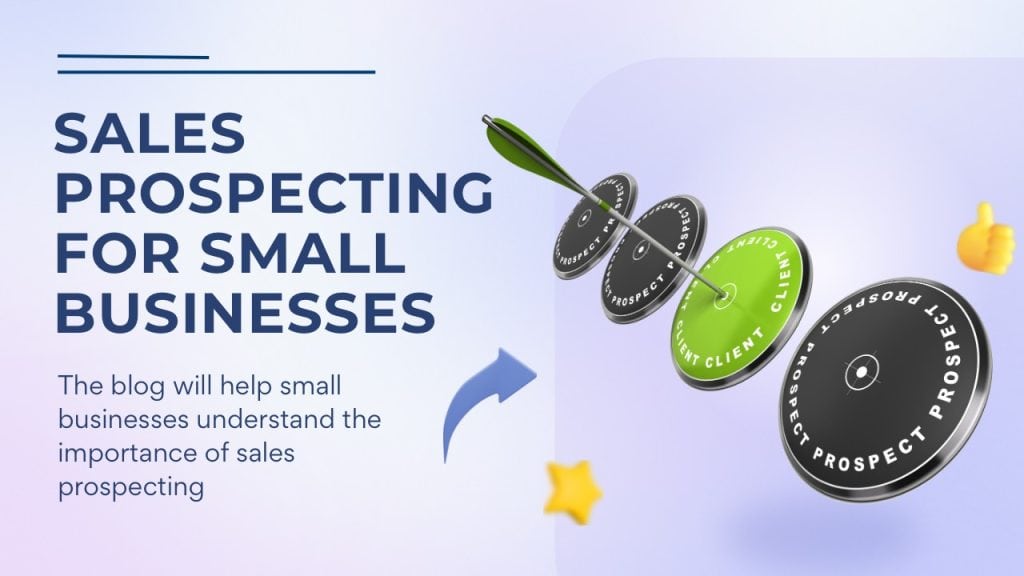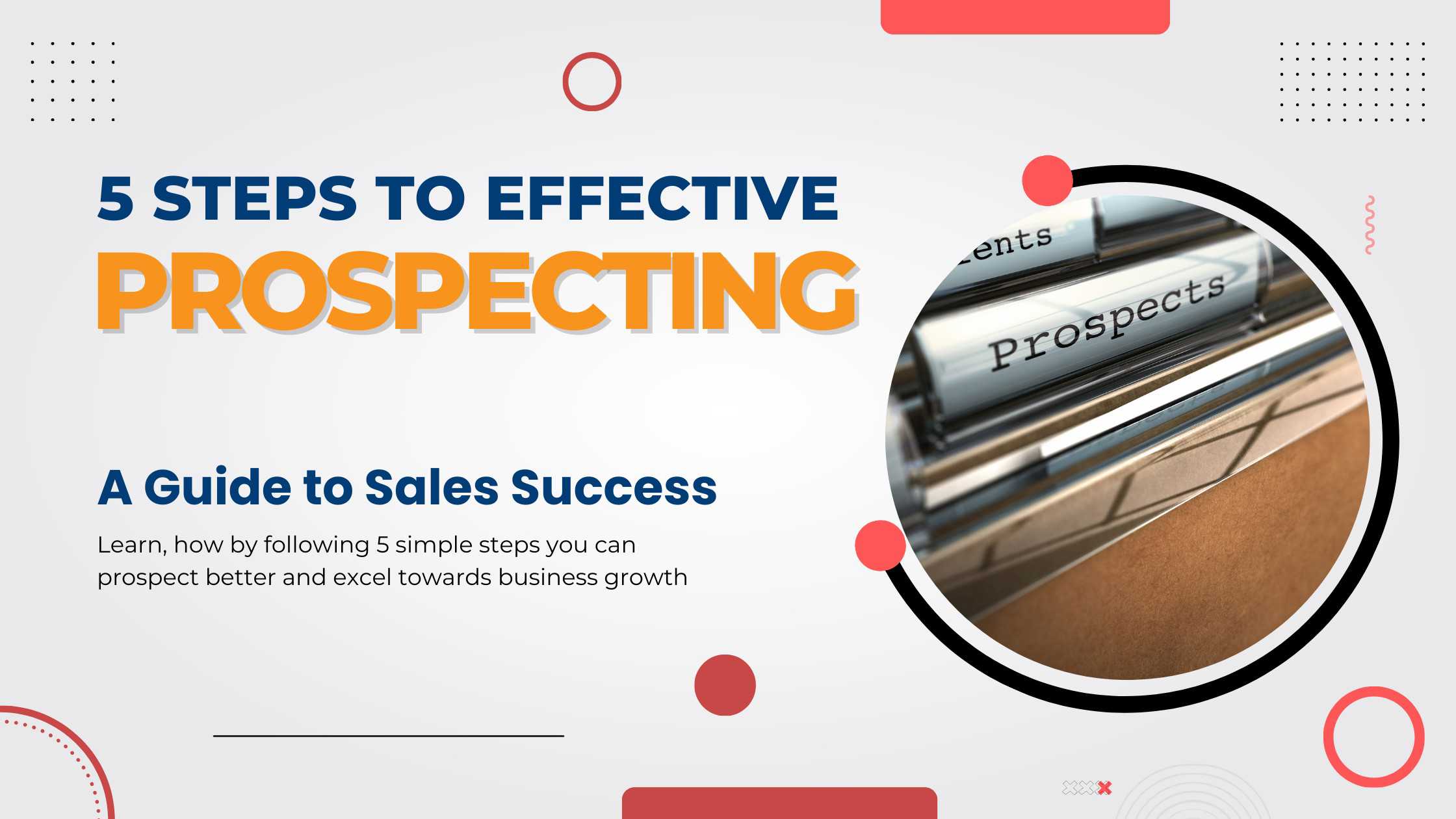Sales prospecting is the cornerstone of any successful business strategy. For small businesses, whether B2B or B2C, mastering this art is crucial to building a continuous pipeline of potential customers, ensuring steady growth and sustainability. This blog explores effective sales prospecting techniques, offering actionable insights and examples to help small businesses thrive.
Understanding Sales Prospecting
Sales prospecting is the process of identifying and cultivating potential customers for a business’s products or services. It involves researching, reaching out, and nurturing relationships with prospects who could eventually become paying customers. For small businesses, effective prospecting can significantly impact revenue and growth.
The Importance of a Continuous Pipeline
A continuous sales pipeline ensures that a business always has potential customers in various stages of the buying process. This consistency is vital for small businesses as it mitigates the risk of revenue fluctuations, helps in forecasting, and enables sustainable growth. A well-maintained pipeline allows businesses to:
- Predict Revenue: With a steady flow of prospects, businesses can more accurately forecast future revenue.
- Allocate Resources Efficiently: Knowing where prospects are in the pipeline helps allocate marketing and sales efforts effectively.
- Maintain Momentum: Continuous prospecting keeps the sales team engaged and motivated, avoiding the feast-and-famine cycle.
B2B Sales Prospecting Techniques
In the B2B space, sales cycles are typically longer, and decision-making processes are more complex. Here are some effective B2B prospecting techniques:
1. Leverage LinkedIn
LinkedIn is a powerful tool for B2B prospecting. Small businesses can use LinkedIn to identify key decision-makers within target companies, engage with their content, and build relationships.
Example: A small IT consulting firm can use LinkedIn Sales Navigator to find and connect with CIOs of mid-sized companies. By sharing valuable content and engaging with their posts, the firm can establish credibility and initiate conversations that lead to sales opportunities.
2. Account-Based Marketing (ABM)
ABM focuses on targeting specific high-value accounts rather than a broad audience. This approach involves personalized marketing and sales efforts tailored to the needs of each target account.
Example: A B2B marketing agency might identify 20 high-potential companies and create customized content, such as case studies and white papers, addressing the unique challenges of each account. Personalized outreach via email or direct mail can further enhance engagement.
3. Networking and Referrals
Networking remains a cornerstone of B2B prospecting. Attending industry events, joining professional associations, and leveraging existing relationships can open doors to new prospects.
Example: A small legal firm specializing in intellectual property might attend industry conferences and join relevant LinkedIn groups to network with potential clients. Encouraging satisfied clients to refer their peers can also generate high-quality leads.
B2C Sales Prospecting Techniques
In the B2C sector, sales cycles are typically shorter, and the focus is often on high-volume sales. Here are some effective B2C prospecting techniques:
1. Social Media Engagement
Social media platforms like Facebook, Instagram, and Twitter offer immense opportunities for B2C prospecting. Engaging with potential customers through regular posts, stories, and ads can drive interest and conversions.
Example: A small fashion boutique can use Instagram to showcase its latest collection, run targeted ads, and engage with followers through comments and direct messages. Hosting Instagram Live sessions to showcase new arrivals and answer questions in real-time can further enhance customer engagement.
2. Content Marketing
Creating valuable content that resonates with the target audience can attract prospects organically. Blogs, videos, and infographics can educate potential customers and build trust.
Example: A health and wellness brand can create a blog with articles on fitness tips, healthy recipes, and wellness advice. By offering free, valuable content, the brand can attract health-conscious individuals who may eventually purchase their products.
3. Email Marketing
Email marketing remains a powerful tool for B2C prospecting. Building an email list and sending targeted campaigns can nurture leads and drive conversions.
Example: A small online bookstore can offer a discount on the first purchase for newsletter sign-ups. Regular emails featuring book recommendations, author interviews, and special promotions can keep subscribers engaged and encourage repeat purchases.
Maintaining a Continuous Pipeline
To ensure a continuous pipeline, small businesses must implement strategies for consistent lead generation and nurturing. Here are some key practices:
1. Regular Prospecting Activities
Dedicate time each week to prospecting activities. Consistency is key to keeping the pipeline full. Use a mix of online and offline methods to reach potential customers.
2. CRM Systems
Invest in a Customer Relationship Management (CRM) system to track interactions with prospects and manage the sales pipeline effectively. A CRM helps in organizing leads, setting reminders for follow-ups, and analyzing the sales process.
3. Follow-Up Strategy
Develop a robust follow-up strategy to stay top-of-mind with prospects. Multiple touchpoints, such as emails, phone calls, and social media interactions, can help nurture leads through the pipeline.
4. Analyze and Adjust
Regularly analyze the effectiveness of prospecting efforts. Track metrics like conversion rates, time to close, and lead quality. Use this data to adjust strategies and improve the prospecting process.
Conclusion
Sales prospecting is an ongoing process that requires dedication, strategy, and adaptability. For small businesses, both B2B and B2C, mastering prospecting techniques can lead to a continuous pipeline of potential customers, ensuring steady growth and success. By leveraging tools like LinkedIn and social media, creating valuable content, and maintaining consistent prospecting activities, small businesses can thrive in a competitive landscape.
Investing in a continuous pipeline not only safeguards against revenue fluctuations but also positions the business for long-term success. With the right approach, small businesses can turn prospects into loyal customers, driving sustained growth and profitability.
Author – Gagan Kapoor, Marketing Consultant and Corporate Trainer




